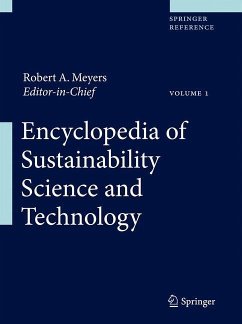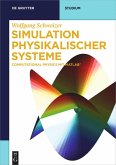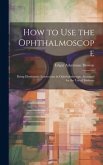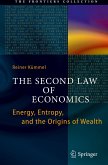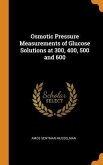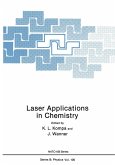What are "sustainability" and "sustainability science?"
In this context, sustainability is a characteristic of a process or state that can be maintained at a certain level indefinitely even as global population increases toward 10 billion. The term, in its environmental usage, refers to the potential longevity of vital human ecological support systems, such as the planet's climatic system, systems of agriculture, industry, forestry, and fisheries, fresh water and human communities and the built environment in general and the various systems on which they depend in balance with the impacts of our unsustainable or sustainable design. It is clear that future sustainability will have to be achieved while many natural resources, including fossil fuels, are either depleted or become scarce relative to population.
The US National Research Council coined the term "sustainability science," and the Proceedings of the National Academy of Sciences (PNAS) publishes a section dedicated to Sustainability Science. The Editor of PNAS Sustainability Science, William C. Clark, acknowledges that the title can be controversial, potentially suggesting a "mature discipline with shared conceptual and theoretical components" which do not exist. On the other hand, "the science of sustainability conveys the notion of multiple sciences addressing a common theme" according to Clark, and is the sense in which the term is used in PNAS Sustainability Science and in this Encyclopedia.
Why this Encyclopedia?
It is increasingly recognized that science and innovation must be conducted and applied in the context of a sustainable future. "Encyclopedia of Sustainability Science and Technology" (ESST) will bring together many top leaders in key areas of fundamental and applied science to create an authoritative single source for understanding the potential and challenges of sustainability. The Encyclopedia will be a foundation work for green and sustainability initiatives worldwide and a roadmap across all of the relevant disciplinary boundaries, including the critical contributions of the physical sciences and engineering. Therefore, the purpose of this Encyclopedia is to provide a detailed roadmap for sustainability science and technology as the objective of the physical, health, environmental, and social sciences as well as engineering, architecture, economics, and of course business. There are a number of web-based and even some print encyclopedic treatments attempting to cover this broad subject (see below), but none rise to the university or professional scientist and engineer level needed to support real progress in sustainability.
We purposely avoid the term "sustainable development" in the title. "Sustainable development" is typically defined without reference to the number of people and at what standard of living both human and environmental needs would be met. However, sustainability science implies that the goal of sustainable development is essential and must be integrated into all areas of science and technology. ESST will serve as a touchstone against which to evaluate the contribution of specific research and development efforts.
(continued in Editorial Comments)
The Encyclopedia of Sustainability Science and Technology (ESST) addresses the grand challenge for science and engineering today. It provides unprecedented, peer-reviewed coverage in more than 550 separate entries comprising 38 topical sections. ESST establishes a foundation for the many sustainability and policy evaluations being performed in institutions worldwide.
An indispensable resource for scientists and engineers in developing new technologies and for applying existing technologies to sustainability, the Encyclopedia of Sustainability Science and Technology is presented at the university and professional level needed for scientists, engineers, and their students to support real progress in sustainability science and technology.
Although the emphasis is on science and technology rather than policy, the Encyclopedia of Sustainability Science and Technology is also a comprehensive and authoritative resource for policy makers who want to understand the scope of research and development and how these bottom-up innovations map on to the sustainability challenge.
In this context, sustainability is a characteristic of a process or state that can be maintained at a certain level indefinitely even as global population increases toward 10 billion. The term, in its environmental usage, refers to the potential longevity of vital human ecological support systems, such as the planet's climatic system, systems of agriculture, industry, forestry, and fisheries, fresh water and human communities and the built environment in general and the various systems on which they depend in balance with the impacts of our unsustainable or sustainable design. It is clear that future sustainability will have to be achieved while many natural resources, including fossil fuels, are either depleted or become scarce relative to population.
The US National Research Council coined the term "sustainability science," and the Proceedings of the National Academy of Sciences (PNAS) publishes a section dedicated to Sustainability Science. The Editor of PNAS Sustainability Science, William C. Clark, acknowledges that the title can be controversial, potentially suggesting a "mature discipline with shared conceptual and theoretical components" which do not exist. On the other hand, "the science of sustainability conveys the notion of multiple sciences addressing a common theme" according to Clark, and is the sense in which the term is used in PNAS Sustainability Science and in this Encyclopedia.
Why this Encyclopedia?
It is increasingly recognized that science and innovation must be conducted and applied in the context of a sustainable future. "Encyclopedia of Sustainability Science and Technology" (ESST) will bring together many top leaders in key areas of fundamental and applied science to create an authoritative single source for understanding the potential and challenges of sustainability. The Encyclopedia will be a foundation work for green and sustainability initiatives worldwide and a roadmap across all of the relevant disciplinary boundaries, including the critical contributions of the physical sciences and engineering. Therefore, the purpose of this Encyclopedia is to provide a detailed roadmap for sustainability science and technology as the objective of the physical, health, environmental, and social sciences as well as engineering, architecture, economics, and of course business. There are a number of web-based and even some print encyclopedic treatments attempting to cover this broad subject (see below), but none rise to the university or professional scientist and engineer level needed to support real progress in sustainability.
We purposely avoid the term "sustainable development" in the title. "Sustainable development" is typically defined without reference to the number of people and at what standard of living both human and environmental needs would be met. However, sustainability science implies that the goal of sustainable development is essential and must be integrated into all areas of science and technology. ESST will serve as a touchstone against which to evaluate the contribution of specific research and development efforts.
(continued in Editorial Comments)
The Encyclopedia of Sustainability Science and Technology (ESST) addresses the grand challenge for science and engineering today. It provides unprecedented, peer-reviewed coverage in more than 550 separate entries comprising 38 topical sections. ESST establishes a foundation for the many sustainability and policy evaluations being performed in institutions worldwide.
An indispensable resource for scientists and engineers in developing new technologies and for applying existing technologies to sustainability, the Encyclopedia of Sustainability Science and Technology is presented at the university and professional level needed for scientists, engineers, and their students to support real progress in sustainability science and technology.
Although the emphasis is on science and technology rather than policy, the Encyclopedia of Sustainability Science and Technology is also a comprehensive and authoritative resource for policy makers who want to understand the scope of research and development and how these bottom-up innovations map on to the sustainability challenge.
From the reviews:
"The entries are long, well written, thoroughly researched and carefully documented. ... Many entries contain very useful and clear diagrams and images to help explain concepts. ... The Encyclopedia of Sustainability Science and Technology is an impressive work in both breadth and depth. This is an area of wide interest and exponential growth of knowledge. ... It will be highly useful for collections serving postgraduate populations in fields related to sustainability." -- Alisa Mizikar, Reference Reviews, Vol. 27 (8), 2013
"The entries are long, well written, thoroughly researched and carefully documented. ... Many entries contain very useful and clear diagrams and images to help explain concepts. ... The Encyclopedia of Sustainability Science and Technology is an impressive work in both breadth and depth. This is an area of wide interest and exponential growth of knowledge. ... It will be highly useful for collections serving postgraduate populations in fields related to sustainability." -- Alisa Mizikar, Reference Reviews, Vol. 27 (8), 2013

